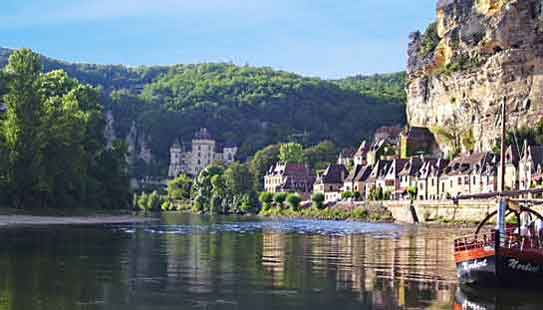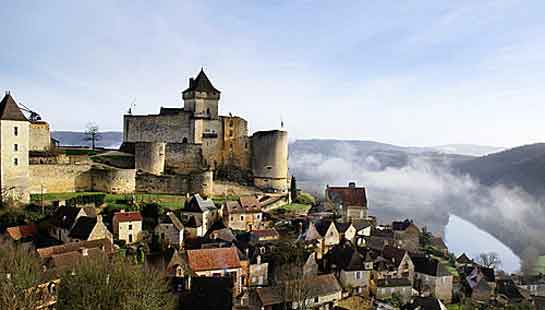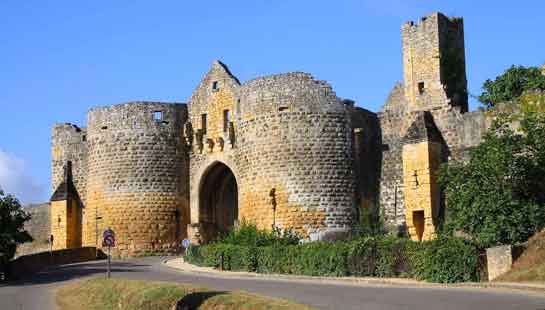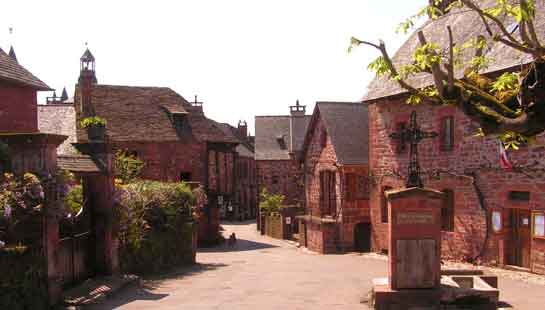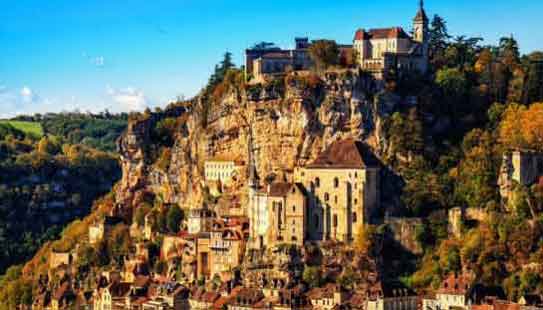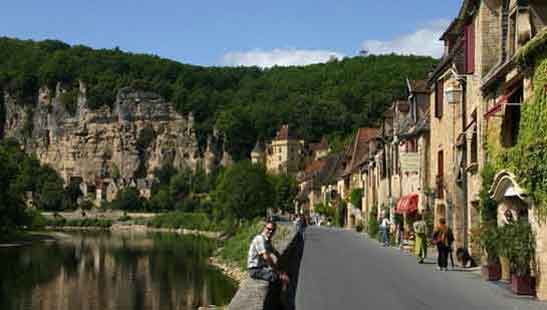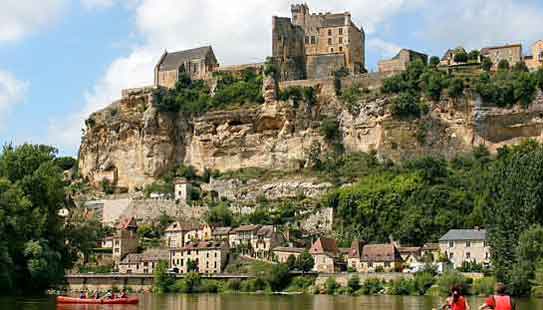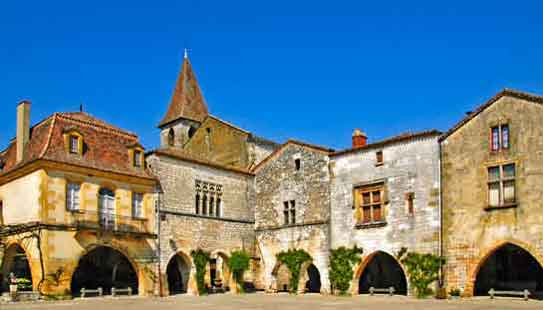Surroundings | the Dordogne area
La Roque Gageac
This very attractive and picturesque little village lies near the slow flowing river Dordogne and is built against a limestone rock face covered with oak trees. Its rustic houses form a surprisingly beautiful whole. La Roque-gageac is the most visited touristic attraction in France after Mont-saint-Michel and Racamadour.
Castelnaud
In Castlenaud there¹s a castle - 12th through 15th century-that was the rival of the Beynac fortress during the 100-year war. This castle is extremely beautifully situated, providing a rare and beautiful view of the Dordogne, the little river the Céou, tabacco fields and poplars.
In short you can see all of Périgord in one view. The ruins are being restored and are open to visitors.
Domme
The cozy medieval, bastide little town Domme (1281) lies high above the Dordogne on top of a rock plateau. Almost all houses in Domme have recently been restored. Domme has already received first price at the annual contest for the title of 'most beautiful flower village in France'. The narrow, curvy streets, chunks of the city wall and the centuries-old houses with their cozy patios are exceptionally well-suited for flower planting.
Collognes-la-Rouge
This town is very picturesque due to its fairy-tale, medieval houses built from red brick.
The old houses used to be inhabited by nobility and have one or more little towers, of which the tip is covered by tatching or slate.
Lush grape vines grow up against the walls of the houses that so resemble little castles.
Rocamadour
This town is unimaginably beautiful, high above the deep and savage ravine of the Alzou, built in and on top of the rocks. It is one of the best located villages in France, which says a lot since France has many of those. Rocamadour is a celebrated place of pilgrimage with many sights worth visiting, such as: Porte du Figuier (13th century), where the cozy main street, Rue Roland du Figuier, cutting through the sheer rock face in different places, starts. From this street there¹s a nice view of the crooked, topsy-turvey and 'hanging' houses; every square metre was used in building these characteristic, little houses. Apart from this climbing the 216 steps of the Grand Escalier is more than worth your while. This 'stairway' leads you passed many interesting monuments to the Cité Religieuse.
Sarlat
Sarlat is the undisputed tourist attraction of the Périgord Noir. Sarlat has a cozy and sublime, restored town centre that offers a dozen sights and few attractive and very lively market places.
The ochre colored houses and the stair-case streets of the old centre occasionally drop to the background in favor of spacious squares on which border beguiling houses.
Here the outdoor cafés, and colorful boutiques don¹t cry out for attention, but add a recreational accent to this architectural diamond of the Dordogne. Some sights are: Place de la Liberté, Place André Malraux, Maison de la Boétie, Cathédrale St. Sacerdos, Cour des Fontaines etc.
Montignac
Montignac lies at the bank of the river Vézère and is well-known for the caverns of Lascaux, one of the most spectacular caverns in the world. The cavern was discovered in 1940 by school boys. Hundreds of paintings and drawings were discovered in the cavern that consisted of four galleries. The wall paintings were severely damaged by their being exposed to the open air. Because of this the caverns was closed off in 1963. In 1974 at approximately 200 metres of the real caverns a very precise copy of the 'Grotte de Lascaux' was opened.
Monpazier
The cozy bastide town of Monpazier (1284) is one of the best-preserved bastides in the Périgord. This town is a perfect rectangle of 220 by 400 metres.The main street lies horizontally and the parallell side streets are bisected by four other side streets. Originally all houses were built the same size and only a narrow space was left between them to prevent fire from spreading too fast. The town centre consists of a cozy square with covered market places and a church. The little town is surrounded by a wall, a fortified town gate and towers for defence.
Les Eyzies
This little village lies protected within the peaceful valley of the Vézère where the most interesting caverns of Europe can be found. These caves used to be inhabited many thousands of years ago as the exceptionally well-preserved wall paintings and innumerable objects, found in these caves, show.

